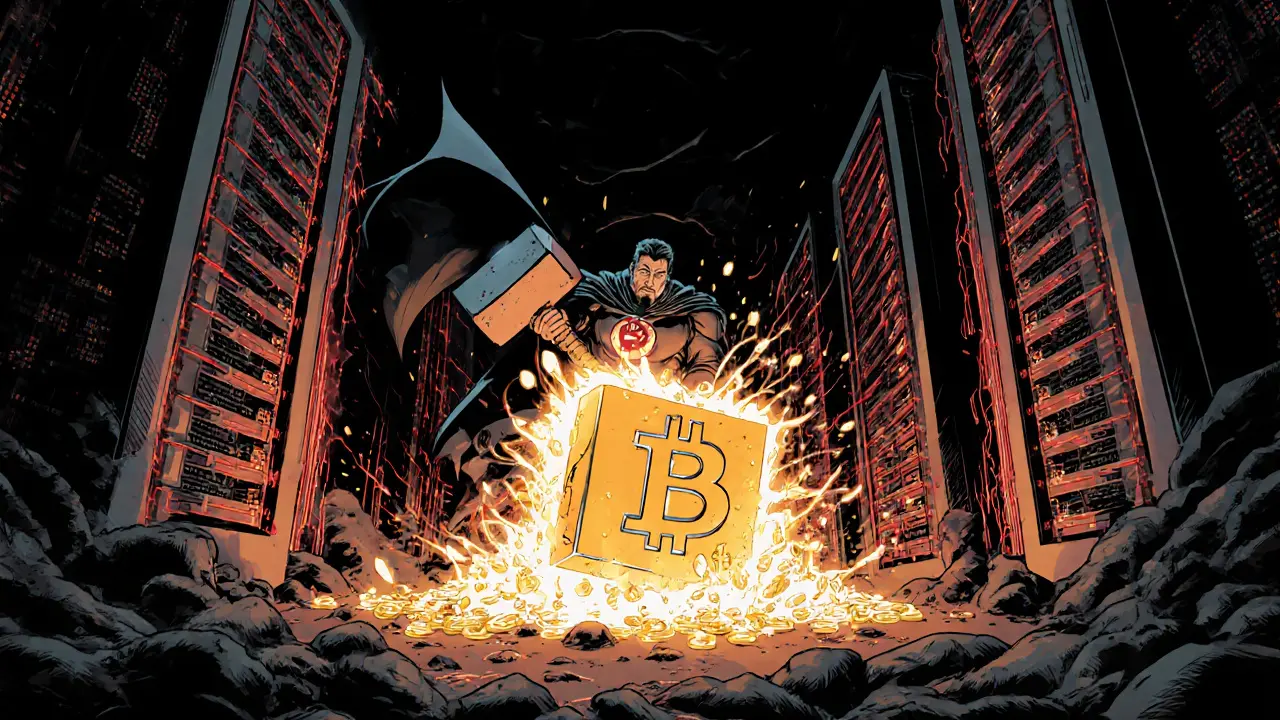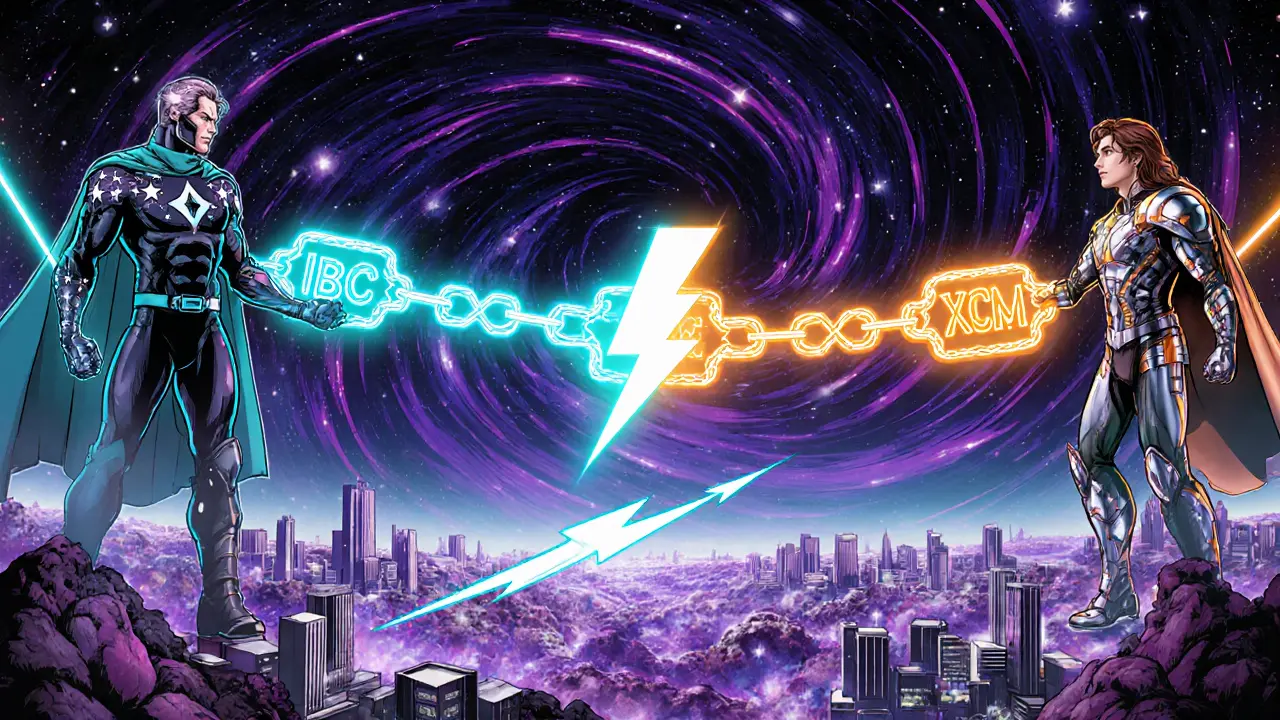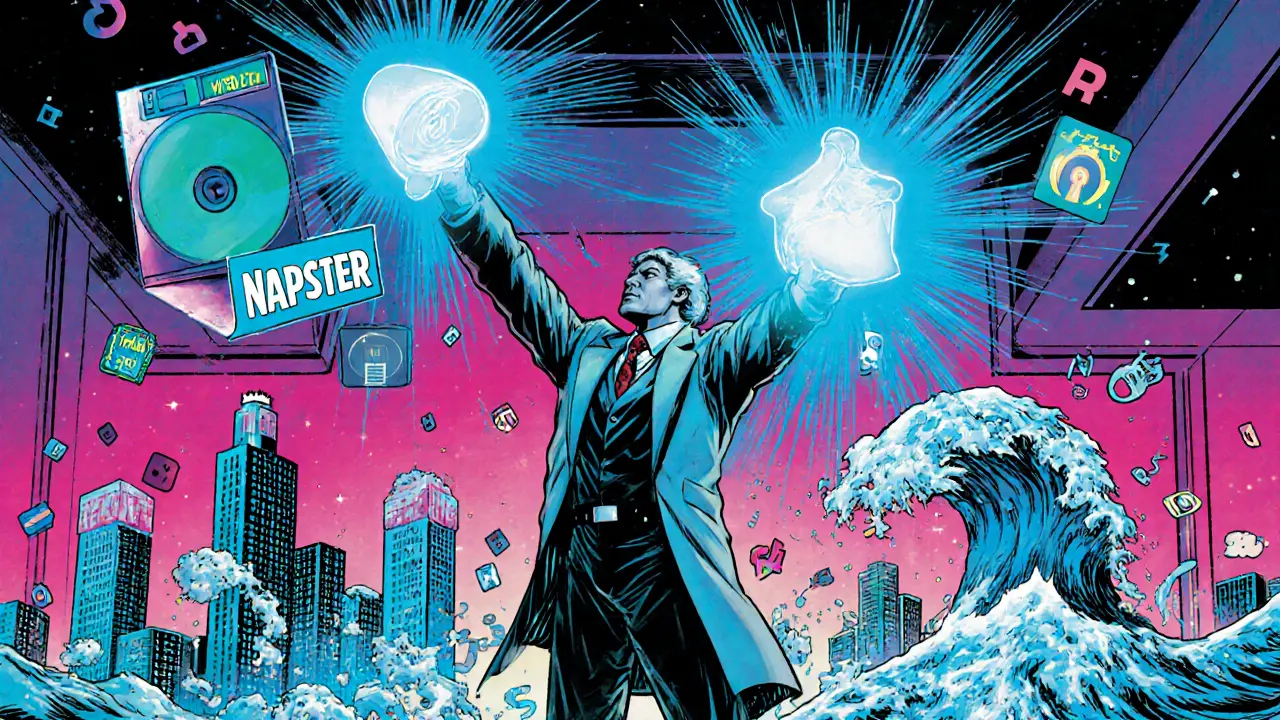Blockchain P2P Comparison Tool
Compare P2P Systems
Select which P2P systems to compare and see key metrics including transaction speed, energy consumption, architecture, and security models.
| Feature | ||||
|---|---|---|---|---|
| Architecture | ||||
| Primary Use | ||||
| Security Model | ||||
| Scalability (TPS) | ||||
| Energy Consumption |
Transaction Speed Comparison
When we talk about blockchain P2P technology is a decentralized framework that lets participants exchange value directly without any trusted middle‑man, we’re really tracing a story that began in the early 1980s and now powers global finance, supply chains, and even central‑bank digital currencies.
Early Roots of Peer‑to‑Peer Networks
The first real taste of P2P came from academic research. In 1982, David Chaum proposed a cryptographic protocol that let mutually suspicious groups maintain a reliable ledger (often cited as a precursor to blockchain). A decade later, Stuart Haber and W. Scott Stornetta created the first cryptographically secured chain of blocks, adding Merkle trees in 1992 to bundle many document hashes into a single block.
For most people, P2P entered pop culture with Napster in 1999. Although Napster relied on a central index server, it showed how thousands of home computers could share files directly, sparking a wave of decentralized ideas. Two years later, BitTorrent took the concept further, eliminating the central server and distributing file pieces across peers.
Birth of Blockchain P2P: Bitcoin
Everything changed in 2008 when Satoshi Nakamoto released the Bitcoin whitepaper, solving the Byzantine Generals problem with a proof‑of‑work (PoW) system. By January 2009, the genesis block had been mined, and the first transaction-10 BTC from Satoshi to Hal Finney-demonstrated true trustless value transfer.
Bitcoin’s architecture relies on SHA‑256 hashing and Merkle trees for efficient verification. Full‑node storage grew from 20 GB in 2014 to over 200 GB by 2020, meaning anyone who wants to validate the network today needs a half‑terabyte SSD and a solid internet connection.
The network processes about 7 transactions per second-tiny compared with Visa’s 24,000 TPS-but the trade‑off is unrivaled censorship resistance and a public ledger that anyone can audit.
Beyond Bitcoin: Ethereum and Smart Contracts
In 2015, Ethereum launched, adding a programmable layer to the P2P ledger. Instead of just moving coins, developers could write smart contracts-self‑executing code that runs on every node. Initially Ethereum used PoW, but the September 2022 switch to proof‑of‑stake (PoS) cut energy consumption by ~99.95 % while preserving security.
Ethereum’s upgrade road‑map includes sharding, a technique that splits the state database into multiple shards, allowing parallel processing and potentially boosting TPS into the tens of thousands.

Scaling the Network: Lightning, Sharding, and More
Bitcoin’s Lightning Network creates off‑chain payment channels that settle on‑chain only when necessary. This reduces fees and enables near‑instant micro‑transactions, a game‑changer for everyday purchases.
Ethereum’s Shanghai upgrade (2023) allowed staked ETH withdrawals, encouraging more participants to join PoS and improving liquidity.
Another milestone is Taproot (2021). By introducing Schnorr signatures and MAST (Merkleized Abstract Syntax Trees), Taproot improved privacy and reduced average transaction fees by about 2.7 %.
Interoperability and the Future: Cosmos, Polkadot, and IBC
Early blockchain P2P systems were isolated islands. Today, protocols like Cosmos use the Inter‑Blockchain Communication (IBC) protocol to let independent chains exchange assets and data securely. Polkadot offers a similar vision with its Cross‑Consensus Message (XCM) format, enabling heterogeneous networks to talk to each other without a central hub.
Gartner predicts that by 2026, 10 % of global government interactions will happen via blockchain P2P systems, up from 0.5 % in 2023. The trend is driven by the need for transparent, tamper‑proof records across borders.
Challenges and Criticisms
Despite the hype, the tech still faces real hurdles. PoW’s energy draw-121 TWh in 2022, comparable to Norway-remains a political flashpoint. Even PoS isn’t immune; complex staking economics can concentrate power in a few large validators.
Scalability is another pain point. Real‑world use cases like high‑frequency micro‑payments still suffer from congestion and high fees. The Poly Network hack of 2021, which stole $600 M, highlighted security gaps in cross‑chain smart contracts.
Regulation adds uncertainty. As of 2023, 32 countries have specific blockchain rules, and the EU’s MiCA framework imposes a 90‑day notification for new P2P services. Companies must navigate a patchwork of compliance requirements before launching globally.

Key Takeaways
- Blockchain P2P technology grew from early cryptographic research and file‑sharing apps into a global, trustless ledger system.
- Bitcoin introduced PoW and a robust consensus model; Ethereum added programmable contracts and later shifted to PoS for efficiency.
- Scaling solutions-Lightning, sharding, Taproot-are closing the gap with traditional payment speeds.
- Interoperability protocols (IBC, XCM) are turning isolated chains into a connected ecosystem.
- Energy consumption, scalability, and regulatory clarity remain the biggest obstacles to mainstream adoption.
Comparison of Early P2P vs. Blockchain P2P
| Feature | Napster (1999) | BitTorrent (2001) | Bitcoin (2009) | Ethereum (2015) |
|---|---|---|---|---|
| Architecture | Centralized index server | Fully decentralized trackerless | Decentralized ledger, PoW consensus | Decentralized ledger, PoS (since 2022) |
| Primary Use | Music file sharing | File distribution | Digital cash transfers | Smart contracts & tokens |
| Security Model | Basic authentication, vulnerable to legal takedown | Hash‑based piece verification | SHA‑256 hashing, 51 % attack resistance | SHA‑256 + PoS staking, formal verification tools |
| Scalability (TPS) | ~100 (limited by server) | ~200 (depends on peers) | ~7 | ~30 (post‑EIP‑1559, expected higher with sharding) |
| Energy Consumption | Negligible | Low (peer bandwidth) | High (PoW, ~121 TWh/yr) | Very low (PoS) |
Next Steps for Practitioners
If you’re a developer, start by running a full node on either Bitcoin or Ethereum to understand the sync process. Expect 48‑72 hours for Bitcoin and 24‑36 hours for Ethereum with a 500 GB SSD. Use hierarchical deterministic (HD) wallets to reduce key‑management risk, which accounts for roughly 20 % of crypto losses.
Businesses looking to pilot blockchain P2P should begin with a private testnet, evaluate compliance with local MiCA or similar frameworks, and choose an interoperability layer (e.g., Cosmos IBC) if cross‑chain assets are needed.
What makes blockchain P2P different from classic P2P file sharing?
Classic P2P (like BitTorrent) only moves data; blockchain P2P adds a cryptographically secured ledger, consensus rules, and immutable transaction history, enabling trustless value exchange.
Is proof‑of‑stake truly greener than proof‑of‑work?
Yes. After Ethereum’s switch in 2022, energy use dropped by about 99.95 %, because validators replace energy‑hungry mining with staking of existing coins.
Can I use Bitcoin’s Lightning Network for everyday purchases?
Lightning works well for small, frequent payments, but you need a compatible wallet and enough liquidity in the channel. Many merchants now accept Lightning, but adoption is still growing.
What are the biggest regulatory hurdles for blockchain P2P payments?
Regulators focus on anti‑money‑laundering (AML), consumer protection, and energy impact. The EU’s MiCA, the U.S. FinCEN guidance, and varying national licensing rules create a patchwork that companies must navigate.
How soon will cross‑chain interoperability become mainstream?
Protocols like Cosmos IBC and Polkadot XCM are already live on mainnets. Expect broader wallet support and DeFi bridges within the next 12‑18 months, especially as regulators clarify cross‑chain asset rules.


Paul Barnes
October 19, 2025 AT 09:41Blockchain P2P is just a hype cycle.
Tom Glynn
October 21, 2025 AT 17:14The evolution from Napster to Cosmos reads like a modern saga of decentralization.
It started with cryptographers dreaming of trustless ledgers, a vision that was ahead of its time.
Those early concepts laid the groundwork for what we now call blockchain P2P.
When Satoshi released the Bitcoin whitepaper, it was a tipping point that turned theory into practice.
Since then, each subsequent platform has tried to solve the limitations of its predecessors.
BitTorrent taught us that file pieces could be shuffled without a central tracker, a principle echoed in blockchain's peer validation.
Bitcoin gave us a secure, immutable record, but its transaction speed left room for improvement.
Ethereum then added programmable smart contracts, opening doors to decentralized applications.
The shift from proof‑of‑work to proof‑of‑stake on Ethereum dramatically reduced energy consumption, a win for sustainability 🌱.
Lightning and sharding are clever engineering tricks that bring us closer to mainstream adoption.
Meanwhile, interoperability projects like Cosmos and Polkadot are stitching isolated chains into a coherent ecosystem.
This network effect mirrors how early P2P file sharing eventually connected users worldwide.
As we look ahead, regulatory clarity will be as crucial as technical innovation.
Governments are beginning to understand the benefits of immutable audit trails, but they also fear losing control.
The balance between freedom and oversight will shape the next chapter of blockchain P2P.
In any case, the journey from Napster to Cosmos shows that decentralization is not a fleeting trend but a fundamental shift in how we exchange value and data 🚀.
Andrew Smith
October 24, 2025 AT 00:47Seeing the whole timeline laid out like this really highlights how far the tech has come; it’s exciting to think about where we’ll land next, especially with all the scaling solutions gaining traction.
Jon Miller
October 26, 2025 AT 08:21Man, I still remember copying MP3s off Napster late at night, and now we’re talking about billions of dollars moving through lightning‑fast channels - it’s wild!
Jessica Pence
October 28, 2025 AT 15:54If you’re just getting started, running a full node is the best way to truly understand blockchain mechanics, just make sure you have enough disk space and a stable internet connection.
johnny garcia
October 30, 2025 AT 23:27Indeed, operating a full node provides unparalleled insight into consensus mechanisms; it is a prerequisite for any serious developer wishing to contribute to protocol evolution 📚.
Scott McCalman
November 2, 2025 AT 07:01Everyone pretends they didn’t see the writing on the wall-blockchain was going to dominate the financial world long before anyone even heard of Bitcoin.
Tom Grimes
November 4, 2025 AT 14:34It’s true that the early days were messy, with lots of trial and error, but each failure taught us something valuable. The community learned how to handle forks, and that knowledge fed into better designs. We saw how incentives can be aligned with security, which is why proof‑of‑stake works. The user experience still lags behind traditional apps, yet the core tech keeps getting stronger. Developers are building bridges across chains, making the ecosystem more cohesive. Regulations are catching up, which will bring legitimacy. Energy concerns push us toward greener consensus. All of these factors together shape the future.
Rebecca Kurz
November 6, 2025 AT 22:07Wow-look at how quickly the “decentralized” narrative was co‑opted by big banks!!! It’s almost as if they wanted to control the narrative from the start…
Patrick Day
November 9, 2025 AT 05:41Honestly, the whole thing feels like a big experiment to see how much data can be hidden from regulators, doesn’t it?
Donnie Bolena
November 11, 2025 AT 13:14Let’s keep pushing forward!!! The community’s energy is unstoppable, and each upgrade brings us closer to true mass adoption!!!
Elizabeth Chatwood
November 13, 2025 AT 20:47Keep learning and building the future it's gonna be amazing
del allen
November 16, 2025 AT 04:21Great summary! I’m feeling inspired to dive deeper into Cosmos and maybe set up a small testnet 😊
Ty Hoffer Houston
November 18, 2025 AT 11:54That’s awesome to hear! Exploring cross‑chain tech really opens up a world of possibilities, and it’s cool to see people from all backgrounds jumping in.